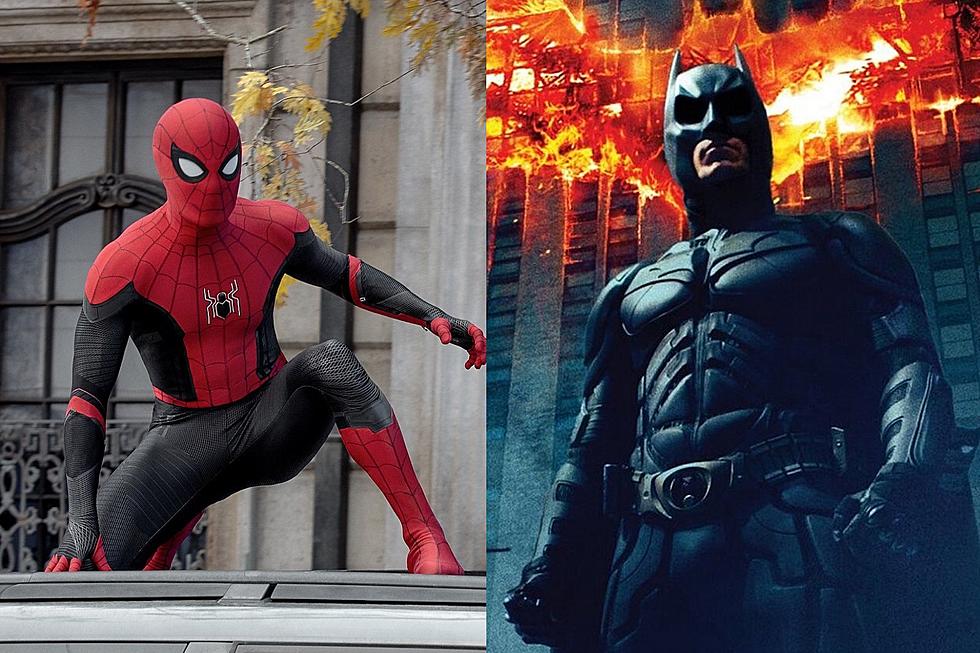
Blockbusters Need to Stop Taking Sequels For Granted
The following post contains spoilers for Batman v Superman: Dawn of Justice.
This is it. The moment you’ve waited nearly two hours for (and technically more than two years for, since the film was announced at Comic-Con 2013): Batman and Superman are going to square off. God versus man. Day versus night. Collateral damage ignorer versus criminal brander. Who will prevail? We’re finally going to know!
Wait, time out. First, let’s watch Wonder Woman look at a computer screen for five minutes.
For reasons that not even Brainiac could explain, director Zack Snyder and writers David S. Goyer and Chris Terrio decided that after putting off the Man of Steel and the Dark Knight’s big tussle for their entire movie, they’d then put it off just a wee bit longer while they set up Snyder’s Justice League movie, which is scheduled to go into production in a few weeks and should hit theaters in the fall of 2017. Wonder Woman (Gal Gadot) looks over some files that Bruce Wayne (Ben Affleck) has stolen from some hard drive belonging to Lex Luthor (Jesse Eisenberg). She’s particularly interested in the file on her, which contains a picture from World War I (for more on that, check out Wonder Woman, in theaters next June).
Even after she finds that picture, though, Wonder Woman keeps clicking through the other secret Luthor files, with an expression on her face that suggests “No one knew what this screen was going to look like when we shot this, so I just looked at the computer as blankly as possible.” One by one, she passively observes surveillance videos of the Flash (Ezra Miller), Aquaman (Jason Momoa), and Cyborg (Ray Fisher). Though all these characters will appear in Justice League, none have any relevance to Batman v Superman, and none appear again in the film in any form. (And Batman, Superman, and Wonder Woman really could have used their help against Doomsday.) It may be the first time in the history of cinema that a character watches their own movie’s post-credits scene during the actual movie.
All of these teases are bland and pointless. They either tell you things that literally everyone on Earth already knows (SPOILER ALERT: Aquaman lives underwater) or they don’t explain anything (So Cyborg is a cyborg ... and there’s a glowing, weird box involved. Okay great terrific.) Other than serving as long-lead teasers for Justice League (and each individual characters’ solo movies, which are all supposedly in the works as well), this scene serves no purpose. At all.
A lot of Batman v Superman is like that. There are references to “metahumans” (the aforementioned characters who, beyond those videos, don’t appear) and the Joker (who doesn’t appear), and the desecrated costume of a dead Robin (who doesn’t appear, probably because he’s dead). There’s a whole dream sequence (or maybe a hallucination? Or is it a flash-forward?) of a future where Superman is evil and has his own private army, while Batman, garbed in his Blast Attack Batman action figure outfit, beats up a bunch of winged demons.
Bruce Wayne wakes from that dream into another one, where the Flash shows up to warn him of some vague threat in the future. The imagery in the scene is designed to evoke a famous sequence from the beloved mini-series Crisis on Infinite Earths, but even longtime comics readers might be confused by the scene, because the Flash a) hasn’t been introduced in any context in the movie before this scene and b) barely looks like the character from the comics. He’s covered in techno-armor and seems deliberately obscured, as if they hadn’t settled on a costume for the character yet. (This should probably be a rule of cinema: If you don’t know what a character looks like, don’t introduce him yet.)
All of these scenes might pay off down the line, but that’s a pretty big if, and one that won’t be resolved, even under the best circumstances, for years. In the here and now Batman v Superman is a jumbled, 150-minute mess. That structure will feel very familiar to anyone who regularly frequents blockbuster movies, because this is what blockbusters increasingly look like these days: feature-length trailers for other movies (that are also feature-length trailers for other movies).
It’s something film has taken from comics, along with their characters. Superman, Batman, and the dozens of other books published by DC and Marvel are periodicals, and almost every individual issue ends on a cliffhanger. Comics routinely juggle multiple stories at the same time; some that will end in any given issue (like, say, whether Superman will defeat Bizarro), some that will end in the short-term (like, say, who sent Bizarro to fight Superman, which might get resolved by the end of a six-issue arc), and some that get left open in the long-term (like who put the guy who sent Bizarro to fight Superman up to it).
A single comic book is designed to leave the reader wanting more, but unless something goes drastically wrong in production, the audience will have at least some of their answers in 30 days. The same goes for television, where it’s just a week between episodes — or less in the age of streaming, when whole seasons are routinely made available in one giant chunk, the better to bingewatch them over a single weekend. More and more, going to the movies is like the worst and most frustrating bingewatch ever. Here’s an enticing episode one! Want more? Great! Get ready for episode two, coming in two and a half years, maybe!
When superheroes first appeared on the big screen, they did it in Saturday morning serials of the 1940s; each week, before the main feature, movie theaters would show a 15-minute episode of a 12 or 15 chapter story about Captain Marvel or Batman or a non-superhero character. Over the last couple years, superhero movies have essentially reverted back to this primal state. Only now instead of an installment a week included with the price of admission, audiences can expect to pay $15 or more for a really long episode that’s barely designed to make sense or entertain on its own until the next one that’s due out in a few years.
And that’s if that next movie comes out at all. Given the financial success of Batman v Superman, it seems like we will see more of Cyborg, Wonder Woman, Aquaman, and Flash. But what if BvS had flopped? Discount DVD racks are littered with franchises that got ahead of themselves, and promised viewers a whole bunch of sequels that never happened. A good third of The Amazing Spider-Man 2 was dedicated to setting up a Sinister Six movie and a Venom movie and a whole universe of Spidey sequels and spinoffs; the movie was so disjointed that the whole line was cancelled in favor of another reboot. In all likelihood, we’ll never get answers to most of the questions in Terminator Genisys, like who sent the “Guardian” Terminator back to the past to protect young Sarah Connor. The next Terminator sequel was recently pulled from Paramount’s schedule with no indication when or even if we’ll ever see it.
This is an almost guaranteed way to make a bad movie: Put the future movies ahead of the present one. That’s why Hollywood need to stop taking sequels for granted, even if they’re adapting a serialized story, and even if Marvel has shown the value in gigantic multi-franchise storytelling. Marvel is the exception that proves this rule; they know how to tease future movies in minor ways without derailing their present movies’ stories. Guardians of the Galaxy leaves you wondering who Star-Lord’s dad is, but that subplot is barely even mentioned while the film focuses on the Infinity Stone and Ronan the Accuser and assembling the team of heroes. (And even in the best Marvel movies there are frustrations; they’ve been teasing Thanos as this major villain for four years now, and it’s still going to be at least two more before we really see him in action. Good luck living up to those expectations, Josh Brolin!)
There’s a lot about superheroes that work really well in the modern landscape of Hollywood. They’re recognizable characters with rich histories and built-in fanbases, and they’re ideal for the sort of effects-heavy spectacle that drives box office. But their serialized narratives remain a poor fit for the cinematic medium. Ideally, movies should only set up future movies that are already in production, like when a franchise shoots two installments simultaneously and then releases them back-to-back (a la Back the Future Parts II and III). That’s not going to happen, of course. But one hopes that more filmmakers start to remember that if they don’t satisfying their current customers it doesn’t matter how much they whet the appetite of future customers.
More From KZCD-FM










